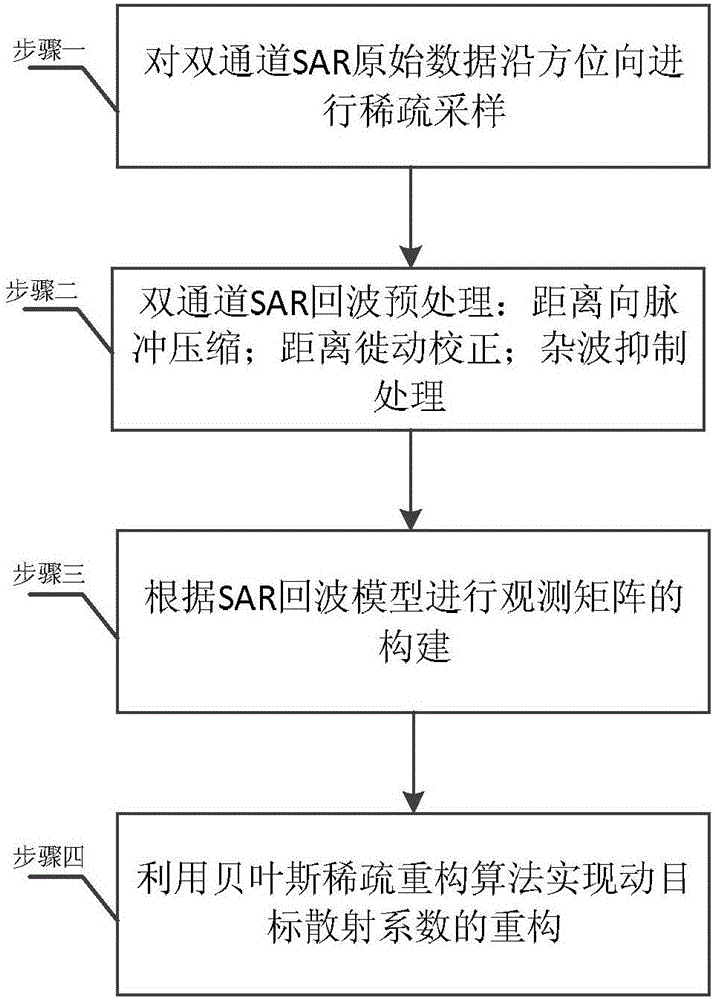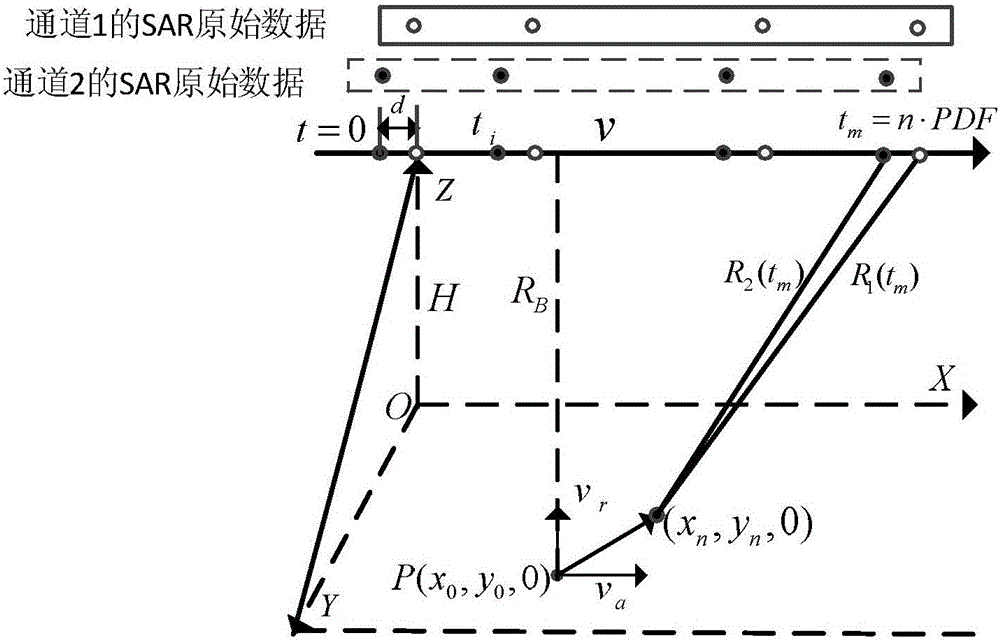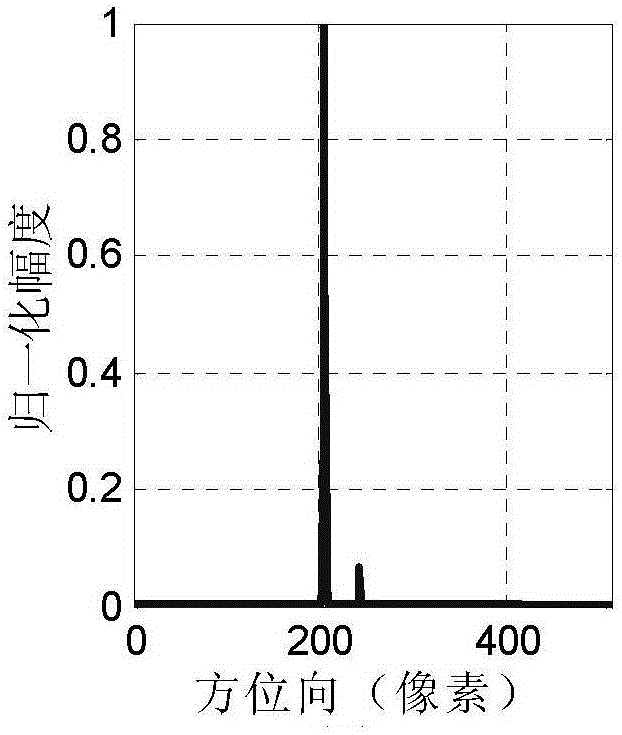Method for detecting dual-channel SAR moving target based on compressive sensing
A technology of moving target detection and compressed sensing, applied in the field of microwave remote sensing, can solve problems such as the number of difficult-to-detect channels and data volume, huge data transmission and storage, submersion of slow-moving targets, etc., and achieve strong practical application value and strong adaptability , the effect of reducing the amount of data
- Summary
- Abstract
- Description
- Claims
- Application Information
AI Technical Summary
Problems solved by technology
Method used
Image
Examples
specific Embodiment approach 1
[0025] Embodiment 1. A method for detecting a moving target based on compressed sensing in dual-channel SAR described in this embodiment is carried out in the following steps:
[0026] Step 1: Raw data of dual-channel SAR is sparsely sampled along the azimuth direction;
[0027] Step 2: Preprocessing of dual-channel SAR echoes: range-wise pulse compression; range migration correction; clutter suppression processing;
[0028] Step 3: construct the observation matrix according to the SAR echo model;
[0029] Step 4: Use the Bayesian sparse reconstruction algorithm to realize the reconstruction of the scattering coefficient of the moving target.
[0030] This embodiment includes the following beneficial effects:
[0031] 1. The sparse sampling echo model adopted in this embodiment does not need to satisfy the Nyauist sampling theorem, which can effectively reduce the amount of data;
[0032] 2. In this embodiment, the clutter suppression processing of the echo data makes the m...
specific Embodiment approach 2
[0035] Specific Embodiment 2. This embodiment is a further description of the method for detecting a moving target in dual-channel SAR based on compressed sensing described in Embodiment 1. The specific implementation of the sparse sampling of dual-channel SAR raw data described in Step 1 The process is as follows:
[0036] Different from the traditional SAR method of transmitting and receiving pulses at equal intervals along the azimuth direction, in this method, random sparse sampling along the azimuth direction is used to reduce the original sampling data, and channel 1 randomly transmits pulses along the azimuth direction, and channel 1 and channel 2 receive pulses at the same time signal, synthetic aperture time T a A total of M pulses are randomly transmitted and received, and the azimuth slow time is expressed as:
[0037] t m = { t 1 , t 2 ...
specific Embodiment approach 3
[0038] Specific Embodiment 3. This embodiment is a further description of the method for detecting a moving target in dual-channel SAR based on compressed sensing described in Embodiment 1 or 2. The preprocessing of the dual-channel SAR echo described in step 2 The specific process is as follows:
[0039] combine figure 2 The geometric structure diagram of the dual-channel SAR moving target detection method, illustrating the preprocessing process of the dual-channel SAR echo, the SAR works in the side-view mode, the height of the platform from the ground is H, and the aircraft moves at a constant speed along the x-axis with the speed v. Two antennas 1 and 2 are placed in the flight direction, the distance between them is d, the LFM signal is transmitted by antenna 1, and the echo signal is received by the two antennas at the same time, at t m = 0, the coordinates of antenna 1 and 2 are (0,0,h) and (-d,0,h) respectively, and the coordinates of the moving target are (x 0 ,y ...
PUM
 Login to View More
Login to View More Abstract
Description
Claims
Application Information
 Login to View More
Login to View More - R&D
- Intellectual Property
- Life Sciences
- Materials
- Tech Scout
- Unparalleled Data Quality
- Higher Quality Content
- 60% Fewer Hallucinations
Browse by: Latest US Patents, China's latest patents, Technical Efficacy Thesaurus, Application Domain, Technology Topic, Popular Technical Reports.
© 2025 PatSnap. All rights reserved.Legal|Privacy policy|Modern Slavery Act Transparency Statement|Sitemap|About US| Contact US: help@patsnap.com



